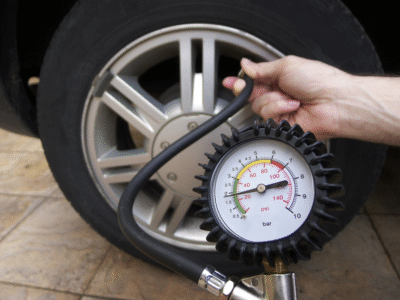
Ford Focus Clutch Repair: The Complete Owner’s Guide to Saving Your Transmission

If you’ve ever driven a Ford Focus and felt that sudden slip in gear, a grinding shift, or that mysterious burning smell creeping up after a stoplight — you’re not alone. The clutch system in a Ford Focus, while efficient and smooth when new, has earned quite the reputation over time. Whether you’re driving a manual or the infamous dual-clutch “PowerShift” automatic, clutch repair can be a real headache.
But don’t panic just yet. We’re here to make sense of it all — the why, the how, and the “how much.” Let’s roll up our sleeves and explore everything you need to know about Ford Focus clutch repair — from symptoms and causes to DIY fixes and professional repair options.
- Understanding the Ford Focus Clutch System
- How the Clutch Works in a Ford Focus
- Common Signs of a Failing Clutch
- The Difference Between Manual and Dual-Clutch Systems
- Why Ford Focus Clutches Fail
- Diagnosing the Issue: What to Look For
- DIY Clutch Inspection Tips
- When It’s Time for Professional Repair
- Ford Focus Clutch Repair Cost Breakdown
- Step-by-Step Overview of Clutch Replacement
- Best Replacement Clutches for Ford Focus
- Tips to Extend the Life of Your Clutch
- Should You Upgrade to an Aftermarket Clutch?
- Ford Focus Dual-Clutch Transmission Lawsuits & Fixes
- Final Thoughts on Ford Focus Clutch Repair
- FAQs About Ford Focus Clutch Repair
Understanding the Ford Focus Clutch System
Before diving into repairs, we’ve got to understand what’s actually going on under the hood. The clutch acts like the handshake between your engine and transmission — it connects and disconnects power so you can shift gears smoothly.
In a Ford Focus, that handshake can get a little weak over time, especially in models with PowerShift dual-clutch transmissions (2012–2016 models were the most notorious).
How the Clutch Works in a Ford Focus
Think of your clutch as a translator between two worlds — the spinning engine and the gear-hungry transmission. Here’s the breakdown:
- Clutch Disc – Transfers power when pressed against the flywheel.
- Pressure Plate – Holds the disc tight against the flywheel.
- Release Bearing – Relieves pressure so gears can change smoothly.
- Flywheel – Stores rotational energy from the engine.
When you press the pedal, the clutch disengages the engine from the wheels. Simple, right? Until it’s not.
Common Signs of a Failing Clutch
If your Focus has started behaving like it’s haunted, check for these telltale clutch symptoms:
- Slipping gears – Engine revs, but speed doesn’t increase.
- Burning smell – A worn clutch can produce a burnt rubber odor.
- Difficulty shifting – Especially when going into reverse or first gear.
- Vibration or chatter – The clutch might shudder when engaging.
- Soft or stiff pedal – Changes in pedal feel often signal hydraulic or cable issues.
Ignoring these signs is like ignoring a toothache — it only gets worse (and more expensive).
The Difference Between Manual and Dual-Clutch Systems
Here’s where things get spicy. Not all Ford Focus models are built the same.
Manual Transmission
Traditional clutch setup: pedal, pressure plate, and disc. You control the engagement.
Dual-Clutch (PowerShift)
Uses two computer-controlled clutches for “automatic” shifting — no pedal needed.
Sounds high-tech? It is, but also famously troublesome. Many owners report shuddering, jerking, and even total transmission failure.
Pro Tip: If your Focus is an automatic but feels like a stick-shift that can’t make up its mind — it’s probably a PowerShift.
Why Ford Focus Clutches Fail
There’s no single villain here. Most failures stem from:
You may be interested in reading- Design flaws in early dual-clutch systems.
- Driver habits, such as riding the clutch.
- Heat and friction, wearing down components.
- Hydraulic leaks or air in the system.
- Faulty software updates (for PowerShift units).
It’s like baking bread — one wrong ingredient and the whole thing falls apart.
Diagnosing the Issue: What to Look For
When your clutch starts acting up, here’s a quick diagnostic checklist:
| Symptom | Likely Cause |
|---|---|
| Slipping at high RPM | Worn clutch disc |
| Grinding when shifting | Damaged synchronizers or release bearing |
| Pedal stuck down | Leaking slave cylinder or hydraulic issue |
| Jerky starts | Dual-clutch calibration issue |
If you’re still unsure, have a mechanic perform a clutch drag test or transmission scan.
DIY Clutch Inspection Tips
Feeling adventurous? You can do some basic clutch checks at home:
- Pedal Test – Press and release the clutch. Feel for resistance or squeaks.
- Smell Test – Burning odor after driving? That’s friction wear.
- Gear Engagement – Try shifting while idling. Sticky gears hint at issues.
- Leak Check – Look for fluid near the clutch master cylinder.
But remember: inspecting is one thing — replacing a clutch is a full-on garage battle.
When It’s Time for Professional Repair
A clutch replacement isn’t your typical weekend project (unless you have a lift, a buddy, and a week off).
You’ll want a professional mechanic when:
- The transmission has to be removed.
- There’s fluid contamination.
- You own a dual-clutch Ford Focus (software + mechanical work).
- The car has more than 80,000 miles and clutch wear is severe.
Mechanics use specialized tools for alignment and pressure calibration — something the average driveway just can’t handle.
Ford Focus Clutch Repair Cost Breakdown
Now, let’s talk dollars.
| Repair Type | Estimated Cost (USD) |
|---|---|
| Manual clutch replacement | $900 – $1,500 |
| Dual-clutch (PowerShift) repair | $1,800 – $3,200 |
| Clutch master cylinder | $300 – $600 |
| Flywheel replacement | $500 – $1,000 |
Labor is often the biggest chunk since the transmission has to be dropped. The part itself might be affordable, but the hours? Painful.
Step-by-Step Overview of Clutch Replacement
Here’s what a mechanic typically does:
- Disconnect the battery.
- Lift the vehicle safely on a hoist.
- Remove the transmission.
- Inspect flywheel and pilot bearing.
- Replace clutch disc, pressure plate, and release bearing.
- Bleed the hydraulic system.
- Reinstall and test drive.
It’s surgery for your car — precision, patience, and torque specs are key.
Best Replacement Clutches for Ford Focus
If you’re replacing, don’t settle for just anything. Here are top picks:
You may be interested in reading 2013 Ford Focus Transmission Fluid Level Check
2013 Ford Focus Transmission Fluid Level Check- LUK Clutch Kits – OEM quality, great fit.
- Exedy – Smooth engagement, ideal for daily driving.
- Valeo – Long-lasting and quiet.
- Centerforce – For performance-oriented Focus ST owners.
Always match your model year and engine type before ordering — not all Focuses are created equal.
Tips to Extend the Life of Your Clutch
Clutches wear out naturally, but bad habits speed up the process. Here’s how to keep yours alive longer:
- Don’t ride the clutch pedal.
- Avoid holding on slopes using the clutch.
- Shift smoothly, not aggressively.
- Don’t rest your foot on the pedal.
- Keep up with fluid maintenance.
Treat your clutch like a friendship — respect it, and it’ll last years.
Should You Upgrade to an Aftermarket Clutch?
If you’re into spirited driving or performance tuning, an aftermarket clutch might be worth it.
Benefits include:
- Higher torque capacity.
- Improved heat resistance.
- Faster engagement response.
However, they can be stiffer and less forgiving for daily commutes — so pick wisely.
Ford Focus Dual-Clutch Transmission Lawsuits & Fixes
Let’s address the elephant in the garage — the PowerShift debacle.
Between 2012 and 2016, Ford faced class-action lawsuits over faulty dual-clutch transmissions that caused shuddering, slipping, and stalling. Ford eventually extended warranties and offered software updates, but not all fixes held up.
If your Focus is one of those models, you might still be eligible for repair assistance or reimbursement through Ford’s customer satisfaction programs.
Final Thoughts on Ford Focus Clutch Repair
Owning a Ford Focus can be a joy — when the clutch behaves.
But once it starts slipping or jerking, the thrill fades fast.
Here’s our takeaway:
Act early, diagnose wisely, and repair with quality parts. Whether you DIY or hand it off to a trusted mechanic, investing in proper clutch repair ensures your Focus drives like new again — crisp, smooth, and confident.
FAQs About Ford Focus Clutch Repair
1. How long does a Ford Focus clutch last?
Typically, between 60,000 and 100,000 miles, depending on driving habits and conditions.
2. Can I drive with a bad clutch?
You can, but you shouldn’t. A slipping clutch can cause more damage to the transmission and reduce control.
3. What’s the difference between clutch repair and replacement?
Repair means fixing specific components (like cylinders). Replacement means installing a whole new clutch kit.
You may be interested in reading 2013 Ford Focus Transmission Fluid Level Check
2013 Ford Focus Transmission Fluid Level Check How to Reset Ford Focus Oil Light: The Ultimate Step-by-Step Guide
How to Reset Ford Focus Oil Light: The Ultimate Step-by-Step Guide4. Is the dual-clutch Ford Focus worth fixing?
If the transmission control module (TCM) is updated and the car is in good shape, yes. Otherwise, weigh repair costs vs. resale value.
5. How can I tell if it’s my clutch or transmission that’s failing?
If shifting is difficult but the engine runs fine — it’s likely the clutch. If the car won’t move or gears grind severely, transmission issues might be to blame.
If you want to know other articles similar to Ford Focus Clutch Repair: The Complete Owner’s Guide to Saving Your Transmission you can visit the category Service and Parts.
Deja una respuesta






More content of your interest